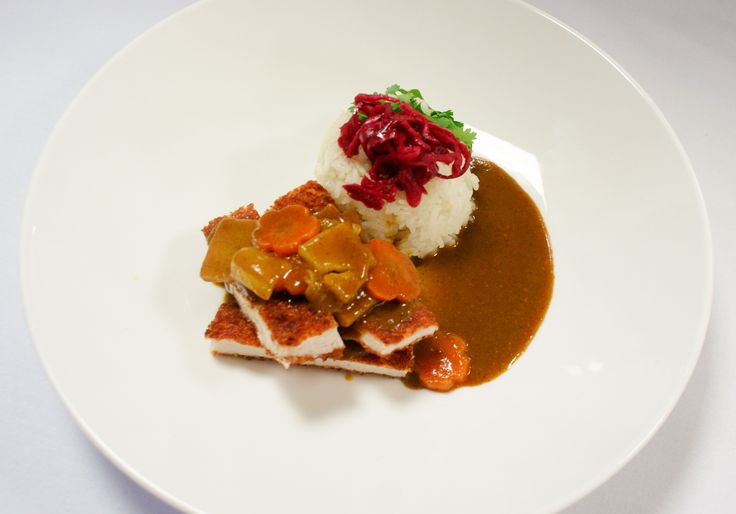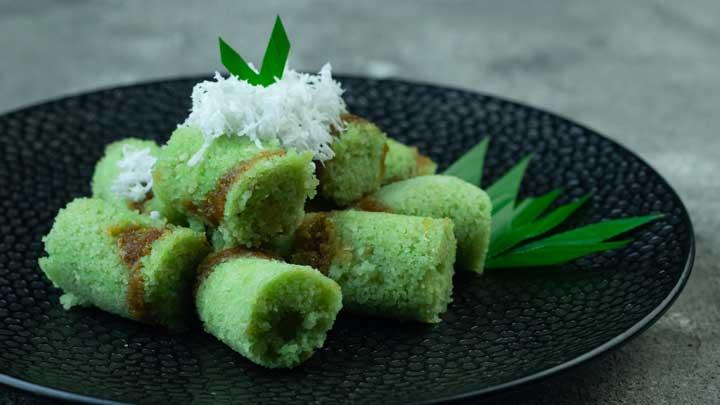Katsu is one of the most beloved dishes in Japanese cuisine, known for its crispy golden crust and juicy, tender interior. The dish consists of a breaded and deep-fried cutlet, typically made from pork or chicken, and served with a rich, tangy sauce. Whether it’s Tonkatsu (pork cutlet), Chicken Katsu, or even variations like Beef Katsu or Katsu Sando, this dish has captured the hearts (and taste buds) of people worldwide.
In this article, we’ll explore the origins of katsu, its different variations, how it’s traditionally served, and even how you can make it at home.
The Origins of Katsu
/cdn.vox-cdn.com/uploads/chorus_asset/file/25163051/IMG_7718.jpg)
Katsu, short for katsuretsu (カツレツ), originates from Japan but has European roots. The dish was inspired by Western-style breaded and fried meat, similar to the Austrian Wiener Schnitzel and French Côtelette. It was introduced to Japan in the late 19th century during the Meiji era when the country was embracing Western influences.
The first recorded Tonkatsu (pork cutlet) was served in 1899 at a Tokyo restaurant called Rengatei. Unlike traditional deep-fried dishes in Japan, which used tempura batter, katsu was coated in panko breadcrumbs, giving it a unique crispiness. Over time, katsu became a staple of Japanese cuisine, evolving into various forms and incorporating different proteins and serving styles.
Different Types of Katsu
While Tonkatsu (pork cutlet) is the most well-known version, there are several delicious variations of katsu, each with its own unique flavor and texture.
Tonkatsu (Pork Katsu)
Tonkatsu is made from a thick pork loin (rosu katsu) or a leaner pork fillet (hire katsu). The pork is seasoned, coated in flour, dipped in egg, and then covered in crispy panko before being deep-fried to perfection. It’s typically served with tonkatsu sauce, shredded cabbage, and steamed rice.
Chicken Katsu
A lighter alternative to pork, Chicken Katsu is made using boneless chicken breasts or thighs. It follows the same breading and frying process as Tonkatsu but has a juicier texture due to the nature of chicken meat. It is commonly paired with curry, as in Chicken Katsu Curry.
Gyukatsu (Beef Katsu)
Gyukatsu is a relatively newer variation, featuring breaded and fried beef cutlets, often served rare in the center. It is typically accompanied by a hot stone grill, allowing diners to further cook the meat to their preferred doneness.
Katsu Sando (Katsu Sandwich)
A popular grab-and-go option, Katsu Sando is a sandwich made with katsu (usually pork or chicken) placed between soft Japanese shokupan bread, with a spread of tonkatsu sauce and sometimes a layer of shredded cabbage. It’s a favorite in convenience stores, cafes, and even high-end restaurants in Japan.
Menchi Katsu (Ground Meat Katsu)
Instead of using a whole cutlet, Menchi Katsu is made with ground meat (pork, beef, or a mix of both), shaped into a patty, and then breaded and fried. It has a juicy, meatball-like texture and is often served with Worcestershire-style sauce.
Katsu Don (Katsudon)
A hearty and comforting dish, Katsudon consists of a crispy tonkatsu placed on top of a bowl of rice and covered in a savory-sweet dashi-based egg mixture. The katsu absorbs the rich flavors, making it a satisfying meal.
How Katsu is Traditionally Served
One of the reasons katsu is so popular is its versatility. It can be enjoyed in different ways depending on personal preference and the dining setting.
With Tonkatsu Sauce and Cabbage
The most common way to serve katsu is with tonkatsu sauce, a thick and tangy condiment made from Worcestershire sauce, soy sauce, ketchup, and fruit puree. It complements the crispy cutlet beautifully. A side of finely shredded cabbage adds freshness and balances the richness culinary of the fried meat.
With Rice and Miso Soup
Katsu is often served as a teishoku (set meal), accompanied by a bowl of steamed rice, miso soup, and pickles. This makes for a well-rounded and satisfying meal.
With Japanese Curry
One of the most famous variations is Katsu Curry, where the crispy cutlet is placed on top of a plate of Japanese-style curry with rice. The rich, slightly sweet curry sauce pairs perfectly with the crunchy katsu.
In a Bento Box
Katsu is a popular addition to bento boxes, where it is sliced into bite-sized pieces and packed with rice, vegetables, and sometimes a boiled egg.
How to Make Katsu at Home
Making katsu at home is easier than you might think. With just a few ingredients and some simple techniques, you can recreate this delicious dish in your own kitchen.
Ingredients:
- 2 boneless pork chops (or chicken breasts)
- Salt and pepper, to taste
- 1/2 cup all-purpose flour
- 1 egg, beaten
- 1 cup panko breadcrumbs
- Oil for frying (vegetable or canola)
- Tonkatsu sauce (store-bought or homemade)
Instructions:
- Prepare the Meat: Pound the pork or chicken to an even thickness (about ½ inch). Season both sides with salt and pepper.
- Breading Process:
- Dredge the meat in flour, ensuring it’s evenly coated.
- Dip it into the beaten egg.
- Coat it thoroughly with panko breadcrumbs, pressing gently to adhere.
- Frying:
- Heat oil in a deep pan to 350°F (175°C).
- Carefully place the breaded cutlet into the oil and fry for 3-4 minutes per side until golden brown and crispy.
- Remove from oil and drain on a paper towel or wire rack.
- Serving: Slice the katsu into strips and serve with tonkatsu sauce, shredded cabbage, and rice.
Tips for the Perfect Katsu
- Use Panko Breadcrumbs – Panko creates a lighter and crispier texture compared to regular breadcrumbs.
- Double Fry for Extra Crispiness – Frying the cutlet a second time for 30 seconds after resting ensures a crispier crust.
- Drain on a Wire Rack – Placing fried katsu on a rack instead of paper towels prevents sogginess.
- Experiment with Different Proteins – Try making tofu katsu or eggplant katsu for a vegetarian alternative.
Why Katsu is So Popular
Katsu is more than just a fried dish—it represents a fusion of Japanese precision cooking and Western-style comfort food. Here’s why it continues to be a favorite worldwide:
- Crispy, Juicy, and Flavorful – The combination of crispy panko coating and juicy meat makes it incredibly satisfying.
- Customizable – It can be paired with different sauces, sides, and presentations.
- Easy to Make at Home – With simple ingredients, anyone can enjoy homemade katsu.
- Widely Available – Found in restaurants, convenience stores, and even Michelin-starred establishments.
Conclusion
Katsu has evolved from its Western origins into a staple of Japanese cuisine, loved by people of all ages. Whether you’re enjoying Tonkatsu with rice, indulging in a Katsu Sando, or savoring Katsu Curry, there’s a version for every taste. With its irresistible crispy texture and delicious umami flavors, it’s no wonder goltogel katsu remains a favorite in Japan and beyond.
If you haven’t tried making katsu at home, now is the perfect time to give it a shot. Once you take that first crispy, juicy bite, you’ll understand why katsu is such a beloved dish worldwide. 🍽️



















